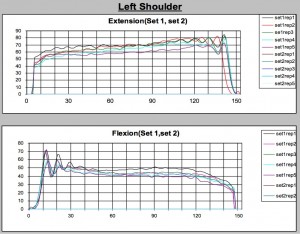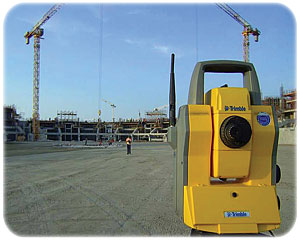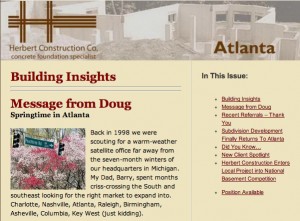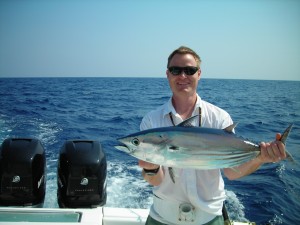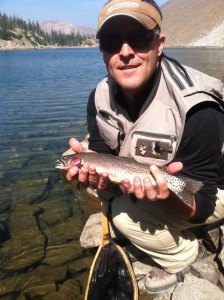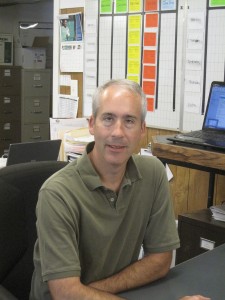Garland Industries Acquires DryDog Barriers, Expands Line of Waterproofing Products
Garland Industries, Inc. recently acquired DryDog Barriers, LLC, a manufacturer of waterproofing products and related accessories for the residential and commercial marketplace, expanding its line of high-performance, below-grade waterproofing solutions for the building envelope. The DryDog line of products and services will be integrated into GMX, Inc., a wholly owned subsidiary of Garland Industries and a leading manufacturer of waterproofing solutions for the industrial, educational, commercial and residential markets.
“The partnership with DryDog positions our newly merged company to take advantage of the gradual improvement of the new residential construction market and better suits us to pursue commercial waterproofing opportunities,” explains Tom Carney, GMX General Manager. Operating under the GMX brand, DryDog products will enhance GMX’s ability to continue providing the industry’s most innovative moisture management solutions for the building envelope. Based in Charlotte, North Carolina, DryDog has a longstanding history of providing quality product solutions that meet the industry’s toughest demands while offering premium waterproofing protection.
“The combined resources of the companies will enable GMX to better serve our existing account base and continue developing innovative product solutions for moisture and air flow management,” reports Lindsay Castles, president of DryDog Barriers.
GMX is a manufacturer and supplier of below-grade waterproofing products for the building envelope and is the only ISO 9001: 2008 certified manufacturer of residential and commercial waterproofing systems. GMX Ultra-Shield® products are engineered to provide superior protection against water intrusion and degradation, guarding your building and its contents from moisture. GMX is headquartered in Cleveland, Ohio.
For more information, contact your local GMX Representative at 866-228-7743 or visit www.gmxwaterproofing.com.
2013 International Concrete Sustainability Conference Co-Sponsorship Agreement
National Ready Mixed Concrete Association (NRMCA) and Concrete Foundations Association (CFA) are co-sponsoring the upcoming 2013 International Concrete Sustainability Conference scheduled for May 6-8, 2013 in San Francisco at the Hotel Sofitel.
The Conference is designed to bring researchers and practitioners together to exchange the latest ideas, knowledge, and tools to build the future of concrete construction as it relates to sustainable design, construction and manufacturing. The Conference will provide learning and networking opportunities on the latest advances, technical knowledge, continuing research, tools and solutions for sustainable concrete design, construction and manufacturing. Researchers, academics, students, engineers, architects, contractors, concrete producers, public works officials, material suppliers and concrete industry professionals are invited to attend, submit papers and give presentations.
If you are a researcher, academic, student, engineer, architect, contractor, concrete producer, public works official, government agency, material suppliers, concrete industry professional, developer, or owner involved in concrete sustainability, this Conference is for you.
Conference Topics:
• LIFE CYCLE ASSESSMENT Assessing carbon footprint, embodied energy and other environmental impacts for buildings, infrastructure, and cement and concrete manufacturing.
• LOW IMPACT DEVELOPMENT Pervious pavements and erosion control structures. Urban heat island reduction, light colored pavements, green roofs and cool communities.
• GREEN CONCRETE Recycled and alternative materials including aggregates, water, cementitious materials, and fuels. Beneficial use of byproducts for cement and concrete production.
• NEW CONCRETE TECHNOLOGY Durability, extended service life models and validation, performance based specifications to foster sustainability. Innovative concrete production methods.
• SUSTAINABILITY INITIATIVES Green building codes and standards adopted by building owners, designers, contractors and product manufacturers. Economic incentives and legislation.
• FUNCTIONAL RESILIENCE High performance concrete applications in buildings and infrastructure, fortified building codes, and community initiatives focusing on disaster resistance and adaptive reuse.
The Conference will consist of presentations (paper and non-paper) and discussions related to design, specifying, manufacture, testing, construction, maintenance and research of concrete as it relates to sustainable development. The tentative program will be 2 full days May 7 and 8 consisting of opening and closing general sessions with keynote speakers, and a series of concurrent technical sessions and panel discussions. Evening social events will take place on May 6, 7 and 8.
Find more information as well as registration and hotel links on the Conference Web site at www.concretesustainabilityconference.org You are also welcome to contact Jim Baty, CFA Technical Director at jbaty@cfawalls.org or 866-232-9255.
Conference History: The 2013 conference will be the 8th annual conference held in the U.S.
Cost Reduction Technology’s Solution to Musculoskeletal Disorder Injuries in the Construction Industry
Editor’s note: The information contained in this article is a demonstration of the efforts the CFA is putting forward toward the development of a revolutionary risk management program to assist companies in qualifying for and taking the greatest advantage of the Insurance Captive forming for this industry. After a successful introduction to this company during the 2006 CFA Annual Convention in Wisconsin, CRT has continued to strengthen their network and support for a broad spectrum of industries. They are first and foremost an employer advocate and may be a strong opportunity for your company. This article is the first in a series of articles planned to begin introducing risk management components to the industry, the future of our focus on risk management.
It is no surprise that the construction industry has experienced more than a two-fold increase in the average number of days away from work, days of restricted duty or job transfer than that of all industry sectors combined according to the Bureau of Labor Statistics’ 2011 injury data. Construction work is tough and there is no simple means of engineering out the risk of injury, especially from musculoskeletal disorders known as MSD’s, through typical ergonomic solutions of redesigning the workplace to safely fit the worker. Cost Reduction Technology’s Solution to Musculoskeletal Disorder Injuries in the Construction Industry Technology, however, is not letting the construction industry down. It is not only possible, but quickly becoming mainstream, to counter the difficulties of ergonomic intervention with matching the worker to the physical demands of the job itself. It’s fundamentally easy, immediate, precise, predictive, safe, and above all else, it’s legal!
Over the past four decades, scientists and clinicians have been evaluating various technologies to measure human function and apply those measurements as predictors of future strain and sprain injury on the job. The one technology that has risen above the rest due to its safety, validity, and predictability is called “Isokinetics”. Isokinetics measures the maximum force that can be generated by various body joints such as the torso, knees and shoulders, along their entire ranges of motion. This data is then compiled and combined into a single numerical record of the applicant or employee’s overall ability to perform physically demanding work. The single numerical score, or Body Index Score, corresponds to the U.S. Department of Labor’s recognized strength classifications that range from sedentary to very heavy. Research supports this technology through outcome studies strongly suggesting its predictive ability to identify applicants for physically demanding jobs who are incapable of performing the work demands without threat of injury. The Americans with Disabilities Act (ADA) specifically recognizes the authority of employers who have objectively assessed their applicants against the specific work demands of their jobs to deny employment to those who physically are an increased risk of injury.
Isokinetics is not new. It has been around for over five decades and is routinely used by orthopedic physicians and physical therapists to treat patients with varying musculoskeletal disorder injuries. It was first considered as an employment tool in the mid-1980’s and has advanced considerably since that time. Today, you will find nearly every industrial sector in America using isokinetic technology for both pre-employment evaluations and post-injury physical capability testing. Isokinetics had been part of NASA’s astronaut evaluations, recognized by the US Military Academies, and a component of the annual NFL Combine. It even has a long history in training, assessing and rehabilitating athletes around the world.
More specifically, the most advanced form of isokinetics is available to the construction industry in many communities throughout the country to assess applicants for physically demanding work. Cost Reduction Technologies, LLC (CRT), a recognized leader in Isokinetic technology, helps numerous contractors from an array of specialties aggressively counteract their MSD workers’ compensation problems at the applicant stage of the employment. Contractors have learned the hard lesson over the years that when they “take employees as they come”; good, bad, indifferent, with existing injuries or susceptibility to becoming injured the cost of doing business goes up. There is only one protection afforded the contractor and that’s matching the worker to the job before they are hired. It’s smart, makes good business sense, enhances productivity, cuts the cost of workers compensation claims, and most importantly, protects the worker from career-ending injuries!
Jim Wildman is the Vice President for Business Development for Cost Reduction Technologies. For 30 years Jim has helped organizations find ways to reduce costs without affecting the customer experience. As a senior executive for a Fortune 500 company Jim provided leadership to the marketing, business development and sales departments. His extensive experience in customer experience management, customer relationship management, strategic business development, and sales management provided a foundation for entering the world of small business. In addition, Jim has spent time as a Director of Sales and Marketing and as a VP of Business Development for small businesses in the Dubuque IA area. Prior to joining the staff at Cost Reduction Technologies Jim worked for Finley Occupational Health. Jim’s background includes time as a Human Resource Manager and as an Employee Health and Safety Manager. Jim has a B.S in Business Management and an MBA in Leadership Studies. CRT provides a cost-effective measure for industry to reduce workplace injuries before they occur. Using the latest Isokinetic Testing technology and equipment CRT assists employers in matching the physical capability of the worker with the physical demands of the job.
Editor’s Note: CRT is presently working with CFA members for incumbent testing to benefit their workforce and a presentation to be delivered during the 2013 CFA Summer Convention in New Mexico. Be sure to plan your attendance to include this important employer-benefit presentation.
Robotic Systems for Layout — A Consultant’s View
It has been a while since any of us have even wanted to think about investing in more layout equipment or upgrading the current systems. Here are just a few ideas on the subject and things that you may want to consider:
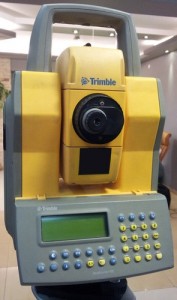
1st…Relax, you did it right the first time
Chances are your existing system (Geodimeter/Trimble 5600 systems or equivalent) are still working as well as the day that you bought it, provided that you have done your maintenance, had the internal batteries replaced every two years along with a cleaning, adjustment, and calibration. These systems are total “work horses” and will still work fine for many years to come.
2nd…Am I about to get passed up by new technology?
While the technology of the past has gone through some changes, in my opinion those changes are generally not “earth shattering” and with a few “workarounds” you can still work as productive as ever. Most of the changes have come in resolving software conflicts with newer computer operating systems, communication challenges and generally computer software “fixes”. Your system is still the about the best thing ever introduced for the specific tasks that you do. Although newer technology includes faster tracking systems, different data collection systems with more “bells and whistles” and some other advantages and disadvantages, when it comes right down to it….you’re really not going to increase your productivity very much if any at all. Certainly not enough to justify the cost of upgrading to a new system based purely on technology enhancement.
3rd…Has the Geodimeter/Trimble 5600 systems reached the end of their life cycle?
While the systems still work as well as they did when they were new, the answer to this question is unquestionably “YES”. The 5600 systems are no longer being produced or marketed. Keyboards are very difficult to purchase and parts may be more difficult to get. The instruments, keyboards, batteries etc. can still be fixed as long as parts are available. Chances are good that you will not be buying another one.
4th…What about the value of the instrument today?
If your instrument is in “reasonable” condition, you still have all the required accessories and it is still working, it would probably be worth 10-15k now. For the amount invested in these systems the return has been very good. I would expect to see the value of the instruments continue to drop off more substantially as the markets pick up and more people start replacing their existing systems within the next few years.
5th…What will I have to look forward to when it’s time to upgrade?
The newer systems being introduced by the manufacturers will have some real advantages but also some real disadvantages. Some of the new advantages will include: Radios built into the data collector (no more external radios), faster tracking systems that will maintain lock onto the prism better, the ability to supplement your search routines with GPS ability to reduce the search time. Fewer batteries and cables. Data collectors with more ability on the screen. Better interfacing ability with newer computer operating systems for uploading/downloading files. Best of all… Prices will probably be about 10% lower than the earlier systems.
6th…What will be the disadvantages to upgrading?
The biggest disadvantage will be in the software programs that you are used to running at the keyboard. This industry is simply a small offshoot of the surveying industry, and that is what these systems are designed for. You’ll need to know a bit more about the individual programs in the data collectors. You’ll probably be using about 20% of the capability of the software in the data collector. The configuration of your data collector will change; the age of the removable keyboard is virtually gone. Several of the manufacturers are re-packaging their equipment to try to market through different channels. This is concerning, you will probably see an influx of people that don’t have a clue about what the CFA members do, all trying to sell virtually the same instruments just painted different colors. Remember…one of the most important portions of the technology is the ability to support you the customer. Be careful who you invest with.
Conclusion…
Unless there is a compelling reason to “sell off” your current system (or if you’ve just got a bunch of money that you don’t know what to do with) there is really no real advantage to upgrading your systems until business is better. The new systems cannot help you drive a nail or stake faster (and I know that you’re not waiting on the instrument now). The newer instruments will have some very appealing new features and benefits but also there will be some disadvantages. There will be a complete new learning curve introduced. I cannot over emphasize the importance of customer service and support when making an investment of this caliber. You will be in trouble if someone simply tells you that you’ll learn these systems in half a day’s training. Do not buy a system without complete multiple days, in the field and at the computer training.
I express my appreciation to the members of the CFA. Over the past decade there have been over 50 of your companies that have placed your trust in me. Most of you have between 1 and 7 systems within your various companies. I have had the pleasure of selling, training and supporting you. I believe that we’re about a 100% satisfaction record.
I plan on exhibiting one of the new systems at the upcoming summer CFA convention in New Mexico. If possible I would like to chair a roundtable discussion similar to those that we have participated in together in the past, to get your input, share my experience and knowledge and continue to support the CFA.
by Scott Carter
Robotic Surveying Solutions
801-201-9510
Content You Bring to the Market: What CFA Members Write About
The following discussion is an excerpt taken from a CFA Member newsletter. CFA members are becoming
aggressive to their markets and supplying their customers with education and information to better
inform them of the expertise that resides in their service. Marketing your company today needs to be
about a lot more than just building the highest quality concrete element, it must infuse the intentional
development of even higher quality relationships and recognition. Do you have a company newsletter?
Contact Jim Baty, jbaty@cfawalls.org, to get the CFA plugged in to your product
and maybe you will be featured in this column in the future.
Social Media for Contractors – Does it Bring In Sales or Just Waste Your Time?
By Doug Herbert
[Featured in Herbert Construction’s Building Insights E-Newsletter, Nov. 12, 2012]
Are you one of those contractors who fears that if you aren’t completely engrossed in social media that you are missing out or doing something wrong? I don’t blame you; social media seems to be all we hear about these days. I believe social media is just one of many marketing tactics that we should be using.
The Social Media Trap
The social media craze has taken over all industries, whether it makes sense or not. It reminds me of the fallacy of “branding” for small businesses. Years ago, marketing textbooks would tell you to spend your marketing budget on image ads that established your brand. That may work for Coke and Ford, but not you and me. We are small business owners. We operate on a very small profit margin. Every dollar or hour we spend on marketing has to return to us with a prospective customer attached to it.
Image ads didn’t work for small businesses back then, but they were easy. You just paid someone to put an ad in the paper or on a billboard and that was it. That may have been easy, but it didn’t result in new customers.
Just as those image ads were easy, social media is easy, too. The big draw is that it is seemingly free. “Hey,” you say, “It would cost me a couple hundred bucks to send post cards to potential customers. But, social media is free.” It may be free to have a Facebook page, but your time is not free.
“If all of the time you are putting into social media isn’t working, then change what you are doing. It doesn’t matter that everybody else is doing it if it doesn’t help YOUR business.”
Every hour you spend on social media could be better spent on other areas of your business. You could be implementing marketing tactics that work more effectively. Or, you could devote that time to streamlining your operations to squeeze every dollar out of the work that you currently have.
I think many people are hiding behind social media, and are taking the easy way out. Re-tweeting interesting thoughts and articles is easy compared to calling on a prospective customer. Adding another blog post about a recently competed job is a lot more fun than implementing a system for tracking where your leads are coming from.
Sure, you may have friends on Facebook, connections on LinkedIn, and followers on Twitter. But can you specifically and confidently show me what leads have come from that? Do your social media efforts directly correlate to checks in your mailbox? Let me ask you this: if you cut in half the time you spend on social media, would your work fall off by 25 to 50 percent? Or, if you stopped your social media efforts altogether, would you notice any drop in sales?
Utilize Multiple Marketing Strategies
Let’s be realistic. If all of the time you are putting into social media isn’t working, then change what you are doing. It doesn’t matter that everybody else is doing it if it doesn’t help YOUR business. Put that time and energy into strategies that actually bring in new customers.
Spread your marketing efforts across multiple tactics. Social media can be one tactic in your overall sales/marketing strategy. Measure the effectiveness of every marketing tactic so you know what works for your business. Eliminate the tactics that don’t bring in new customers, and pour the coals to the tactics that work.
Limit Social Media Time
Are you afraid that you’ll miss the boat if you are not involved in social media? If so, then have someone manage it for you, such as your Office Manager. Or, hire a college kid for part-time work (they know more about social media than you do, anyway). Give them guidelines, a little direction and let them handle it.
Can’t bear to have someone else manage your personal image online? Then limit yourself to fifteen minutes a day. Schedule that time at the end of the day. If your important meetings and tasks throughout the day cause you to fall behind schedule, all you’ll do is miss your social media time. Worse things could happen.
Should you have a presence in social media? Sure, have a presence. But, don’t let that be the only marketing that you do. Hold it accountable for adding to the sales of the company just as you would any other marketing tactic. Spend your time on the things that will have the biggest impact on your business in the shortest amount of time.
CFA WELCOMES NEW BOARD MEMBERS… ANOTHER GENERATION
Without a doubt, one of the most exciting aspects of remaining connected
to a powerful industry organization is the evidence of evolution and the
perspective that it brings to your business. Benjamin Franklin once said,
“When you’re finished changing, you’re finished.” Certainly one can adamantly
support this for the goals and challenges of an Association and one
has to look no further than our Board of Directors to see just how much
change is moving us forward to the future of the poured wall industry.
During the Annual Meeting this past summer, attending members voted
in two new faces to the Board of Directors along with renewing terms for
Valerie Gore of Solid Foundations Inc. in Bellevue, Ohio; Dan Bromley
of ABI Corporation in Lee’s Summit, Missouri; Phil Marone of Marone
Contractors Inc in Thorofare, New Jersey; and Dennis Purinton of Purinton
Builders Inc in East Granby, Connecticut. The strength of experience
found in these four returning industry leaders has been coupled with
energy, fresh perspective and yes, generations of wisdom stemming from
the placement of Sean Smith of MPW Construction Services of Wellington,
Ohio and Doug Herbert of Herbert Construction Company of
Marietta, GA.
Jim Baty, CFA’s Technical Director sat down with your newest Board
members not long after their election to the Board to get some insights
into how they view their opportunities and challenges as not only Board
members but also those following their own personal legacies. Both Sean
and Doug follow in the footsteps of their fathers, Scott Smith and Barry
Herbert who served as Presidents of the Association and who were both
bestowed the Association’s highest statement of respect in the Bob Sawyer
Award.
Jim: Since both of you have grown up in the CFA, and have been part
of very active companies, I know you’ve attended many CFA events.
What are some of your fondest memories from those events?
Doug: It’s probably a tie, for me, between listening to Bill Esker
and Arie VanWyk telling stories and running around with Sean Smith
after the “official” evening get-togethers.
Sean: When I think about all of the different CFA events that I
have attended, I immediately think about the people at the events,
not “The Event.” There is always a good story to be told following a
gathering of that many people from our industry!
Jim: What do you first think about when you contemplate becoming
or serving as a member of the CFA Board of Directors?
Sean: It was an honor to be considered. Then, I wouldn’t be honest
if I didn’t say I had a little nervous feeling that maybe I couldn’t or
wouldn’t live up to the expectations of a board member. There have
been so many great businesspersons and leaders that I have observed
during my life around the CFA. I wouldn’t be human if not nervous
to follow in their footsteps.
Doug: I agree with Sean about the enormous honor to become a
board member. And, I am excited about the opportunity to improve
our association and to network with the best minds in the poured wall
industry.
Jim: Your tenure on the Board starts on the heels of the most difficult
economic period of your lives, if not in our history. If you had to name
the hardest decision you’ve been involved with professionally these past
five years, what would it be?
Doug: It was after we hadn’t had any work for many, many months.
We had already laid off all of our field people, and we finally had to
lay off five of our core leadership team. It felt as if we were losing the
last 10 years of training, learning, improving, growing and positioning.
Since then, we’ve begun to grow again and have been fortunate to get
two of those people back, but it isn’t the same as it was before.
Sean: It seems as if every decision we made the last five years was
difficult. For me personally, the decision to close our business in
Pittsburgh and move back to Cleveland was a tough one. There have
been so many hard decisions made in the last five years in our business,
by every member of our team it is hard for me to identify with one singular
decision. We had cuts in pay, cuts in benefits, good people were
losing their jobs, the list of difficult decisions is lengthy. However, it
is because the President of our company and our Key Team made the
difficult decisions that we are still in business and I am able to serve on
the board.
Jim: The hard and tough decisions in such a period of time are often
the most recognizable or strongest in our mind. However, being on
the recover side of such an economic event, it means there are positive
decisions that have influenced where you now are. What is the most
gratifying decision you’ve been a part of during these past five years?
Sean: I think that is related to my earlier statement, that being a part
of a key management team that faced tough decisions head on and rose
to make them at the appropriate times. What we accomplished was
saving the company and setting us on a new path of leadership and
what we hope will be sustained growth.
Doug: The most gratifying decision I was a part of was our decision
to travel out of state for work. That decision was responsible for the
survival of our company. Although in the end we decided to pull back
from those efforts to support the new growth occurring in our primary
market, the income it presented during the leanest time was invaluable.
Jim: Becoming a member of the CFA Board of Directors ushers a
new opportunity for you as an industry leader, something you’ve both
already identified that you don’t take lightly. What leadership quality
do you feel will drive your time as a CFA Board member?
Doug: I hope to bring my enthusiasm, an ability to communicate,
and a strong desire to help the Board and Executive Team move the
association forward.
Sean: For me it would be energy. I see my opportunity being to take
the history I have been given and challenge the Association’s future
with the energy I have to see how far we can take this network.
Jim: Of all the opportunities presented, what are looking forward to
the most as a CFA Board member?
Sean: I am looking forward to giving time and energy to an organization
that has been extremely good for MPW and our business
culture. We have learned so many valuable lessons from the organization
and the Active members of the CFA.
Doug: I would like to raise the level of awareness of the CFA among
concrete contractors, and increase our membership.
Jim: Finally, given the opportunity to set one goal for the future of the
CFA, what would yours be as a Board member?
Doug: To make the CFA the premier resource for information, and
the most influential authority on poured walls.
Sean: I’d have to echo what Doug says. I guess you could say those
years of running around together “after” the events gave us the common
feeling that this is a really great place to be [CFA] and to make
that known to an increasing percentage of the industry, both for contractors
as well as our customers and regulators, is the goal I see.
The CFA Board officially welcomed Sean and Doug to their first meeting
in Toronto, Ontario this past fall. The CFA Board of Directors meets
during the World of Concrete, on Monday, during the CFA Summer
Convention and has begun to hold its spring and fall meetings in combination
with the spring and fall conventions for the American Concrete
Institute. This decision already shows evidence of a unified Board goal to
instill the CFA as the authority for poured walls by making it economically
possible for increased CFA member participation in the direction of codes
and standards that ACI is responsible. If you would like more information
on the CFA Board, their meetings or the direction of this Association and
ACI, please contact Jim Baty, CFA Technical Director at jbaty@cfawalls.
org or 866-232-9255.
Meeting the Challenge of Change
Dear CFA Friends,
I hope 2013 brings happiness and prosperity for you all. For me, the transition from 2012 to the New Year means change. I find myself looking optimistically to the new horizon but keeping a reflecting eye on the rear view mirror.
In 2012, our company celebrated the retirement of three key employees that have been with us for two, three, and four decades. We have also seen our field personnel become, let’s say, more seasoned and experienced. Some have experienced shoulder surgery, some knee replacements, and others back surgery. Some are burned out and taking light duty positions.
These changes present real challenges. In our area, the young apprentice work-force seems to have dried up. The low-prices and high demands of this economy have succeeded in demotivating star employees. Our challenge is to put our long-standing employees in positions that capitalize on their experience and enhance their longevity. We will be looking at subcontractors, equipment, and processes that compensate for the decline in young, strong backs.
These changes present new opportunities, and require new ideas. As always, I look to you, my CFA friends, for guidance and advice. I hope to pick your brains at the “Live Before Five” CFA happy hours at World of Concrete, every day after the show. But be warned, I need to talk shop.
Jim Bartley, CFA President
Bartley Corp
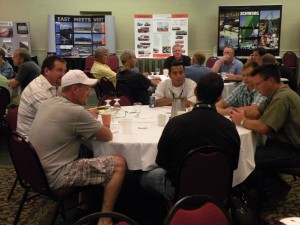
One of the technology round tables featured during the 2011 CFA Annual Convention in Wintergreen, VA
Member Exchange Networks (M.E.N.)
It has been nearly 1-1/2 years since the formation of the first CFA Member Exchange Network (M.E.N.) group. Representatives from CFA member companies in Iowa, Missouri, Nebraska and Illinois met in Waterloo to exchange information about how their companies operate, their challenges, their solutions, and the state of the industry. Since then they have met two more times and the date of their next biennial meetings has already been set.
While non-disclosure agreements were signed prior to the first meeting, in-depth discussions only occurred after people became comfortable sharing how they operate their businesses. This can take several meetings. That doesn’t mean there wasn’t a lot of information to discuss. Everything from implementation of new technologies to bonus plans and personnel issues have been on the agenda for meetings. M.E.N I, the name I have given this group until they come up with their own, is now operating on their own.
They determine the meeting times, agendas, whether or not they want to let others participate in their group and all other aspects of the effort. CFA assists in the formation of the groups and can provide programming support where feasible.
CFA members have always been generous in sharing their experiences, both good and bad. If someone makes a mistake, they would like to make sure that others in our network don’t do the same. Likewise, if they have a tip or technique that can save time or money, they share that information with other members. The current effort on Fall Protection is a classic example of a small group of members sharing their experiences and work on an issue with the entire organization. The M.E.N concept takes the informal discussions that occur at the annual conventions and board meetings to the next level in a structured environment. It has the potential to involve more members and for them to interact at a time of their convenience and discuss subjects of their concern. The relationships developed within these groups often extend beyond the scheduled meeting times.
There is interest from CFA members in the Northeast and Ohio to establish additional M.E.N groups so we looking to start M.E.N II and M.E.N III in the near future. It takes a minimum of 5 non-competing companies to start at group but 6-8 is the ideal number. More than that number makes it nearly impossible to get meeting dates agreed upon.
The CFA serves as a facilitator and support network to get the groups started. We have a standard non-disclosure agreement, sample agenda, suggestions for running and scheduling meetings and a host of other ideas for starting a group. We also act as a clearing house for those interested by checking with potential members regarding non-competition and whether or not participants can work with each other. Once the group is started, they are on their own.
If you have interest in participating, please give me a call or send me an email at esauter@cfawalls.org. If there are a large number of competing contractors in a given region, a second group may be organized.
Insurance – Are you in a competitive advantage or disadvantage?
Are you aware that we are heading toward a very hard market for insurance? A hard market is a time when the insurance companies have complete control and power over the service and protection they provide to you, their customer, as well as the rate at which they provide it.
You may be at a competitive disadvantage as this moves forward if you are not considering involvement in a captive insurance program. More than $150 billion in Fortune 500 insurance has already flowed into the alternative market, a market defined as protected-risk self-insurance or insurance captives. A significant number of your industry peers has already invested considerable time and energy to establish this type of power and market advantage for this industry so that you have the ability to benefit from investigating the alternative market.
In a recent article published in the January/February edition of Grading and Excavation magazine, Nate Heying writes: “If you have not looked into alternative insurance programs, you are already among the minority.” He goes on to talk a great deal about many of the facets of insurance captive programs that CFA leadership has already learned and begun to implement. “Key benefits,” writes Heying, “of group captive programs include long-term control, enhanced claims management, upfront savings, and potential for significant returns plus investment income.” He goes on to say, “Every organization has dealt with a claim that they felt was fraudulent yet was settled and paid by the insurance carrier for reasons that benefit the carrier.”
Read the full article on Insurance Captives.
“The fact remains that you can’t manage what you don’t know you don’t know,” states Jay Odice of Odice International, the captive management that the CFA has retained to deliver our industry’s only captive opportunity. “We apply state of the art industry-specific risk management protocols for all participating members. The insurance industry doesn’t know your business, and even worse, doesn’t really care. This is why it is so essential for your Association to be involved. Through that vehicle, members have access to the risk management that is recognized and developed from the insurance program, thereby raising their viability as a participant in the program.”
The choice will always remain yours, but the knowledge that has been developed already proves just what this industry will soon largely benefit. Contact Ed Sauter for additional information on the state of the CFA’s captive insurance program.
Cold Weather Concrete Pumping Tips
How to prevent or deal with concrete freezing in the concrete pump, which can stop the flow of concrete through the pipeline
American Concrete Pumping Association & Schwing America, Inc.
as seen at For Construction Pros.com
Cold weather pumping can present a variety of problems as compared to pumping in moderate temperatures. Most obvious, of course, is if the concrete freezes in the boom or other parts of the unit such as the hopper – thus stopping the flow of concrete through the pipeline.
One way to avoid this from happening is to mix the concrete using very hot water to keep the concrete from freezing during the delivery and waiting period. When priming, slurry should also be mixed with hot water. If the slurry freezes against the walls of the pipeline, it can restrict the flow of concrete causing a blockage. The pumping company can contact the ready mixed company and arrange for the first driver to be loaded with hot water for use when mixing the slurry.
Some companies will also wrap their boom pipeline with insulation. In most cases, the insulation is a foam tube cut to accommodate the pipeline, placed around the pipe, and taped together. The foam holds in the heat of the concrete allowing it to flow as normal.
Another way to keep the pipeline from freezing is to pre-heat the boom pipeline using the exhaust stack from the unit’s engine. Using an exhaust hose specifically made to withstand high temperatures, the boom operator slips the heat resistant hose over the exhaust pipe and places the other end into the tip hose of the boom – allowing its warm air to flow through the pipeline and exit from the hopper. With this procedure, it is important that airflow has an open pathway for exiting. Without an open path, the hot air from the exhaust will be forced backward and create excessive back pressure on the engine of the truck.
If the concrete should freeze in the boom, pumping will stop until the machine has been warmed up. Fortunately, concrete will stop setting when it has frozen. Once the machine has been moved to a warm place and allowed to thaw, it must be cleaned out before fresh concrete can be added and pumping resumed.
Concrete can also freeze in the unit’s hopper preventing it from entering the pipeline. When this happens, the consequences will be the same as if concrete froze in the boom. The concrete must be allowed to thaw and the hopper cleaned out before fresh concrete can be added.
Calcium chloride or other similar type additives are typically used to accelerate the setting of concrete. When using an accelerator, the concrete must be kept alive using the same techniques used for pumping on hot days. As temperatures during the day begin to rise, you should consider decreasing or stopping the use of an accelerator because the concrete can “flash” just like in hot weather.
Although calcium chloride accelerates the setting of concrete, if it freezes, the setting stops. Once the machine begins to thaw, the concrete will begin to set again even more quickly than when on the job because it is now in a warm area. Time should not be wasted when cleaning a machine under these circumstances.

Some companies will also wrap their boom pipeline with insulation, which is often a foam tube cut to accommodate the pipeline, placed around the pipe and taped together. The foam holds in the heat…
It is also possible to pre-heat a separately laid pipeline in much the same manner as pre-heating boom pipe. Using a high-temperature resistant hose, warm air is diverted from the truck’s exhaust into the pipeline allowing it to flow throughout the system and escape out the end.
If the motion of the concrete is stopped in a frosted pipe, the heat will radiate from the concrete so quickly that the entire line can freeze completely in a matter of moments. Usually if this happens, the pour cannot be completed until the slick line is replaced, and the concrete sitting on the job will often be rejected before it can be pumped. Many dollars can be lost when this occurs.
Safety procedures
Never stand on ice-coated pipes or other round objects and use caution on the pumping unit’s decks and steps. Workers are reminded to wear the appropriate cold weather personal protective equipment and to always wear insulated gloves when handling icy pipes and clamps that can slip causing injury.
Extreme caution is especially needed during and after cleanout as all areas surrounding the pumping unit might be coated with ice as a result from the water that was used to clean out the pipes and accessories. Serious injury can occur as result from slips and falls.
Pumping concrete in temperatures as low as -10° Fahrenheit, and even lower, is not only possible but routine in many parts of the world. However, the pump’s manufacturer may prohibit use of the boom when temperatures fall well below sub-degree temperatures and the pumping company should be aware of the specific temperature restriction of their respective manufacturers. Use of the boom in extreme cold conditions will cause the steel of the boom to become brittle and cause it to crack from normal boom bounce.
Prior to the pump arriving on the jobsite, it is a good idea to communicate with your employees and/or the pumping company to discuss any conditions, such as extreme temperatures, which may have an effect on the safety and performance of the pour. Work to develop a plan which will not only ensure a successful pour but one that enables you to obtain the maximum benefits of placing concrete with a concrete pump.
Source: Schwing America, Inc.Manufacturer’s Operating Manual for Concrete Pumps

